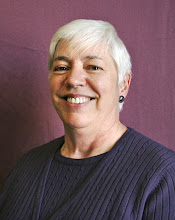The Concentric Perspective was published in 1989 with the subtitle What’s in It from Me? The main focus of this book is that each person operates from a center point and his experiences emanate outward from the center. Eric Butterworth uses the visual of two spheres touching at their endpoints, one representing the divine and the other the human expression of the divine. EB suggests that in cross section these spheres can be seen as a series of circles with a common center point. That center point is the place from which each person most effectively responds to life.
EB suggests that the spiritual journey is one of self-discovery (auto-pedagogy). It is not a matter of forcing or trying or working hard. Rather it is a process of allowing. As a seeker gets him or herself out of the way, the inner powers are accessed and the individual finds him/herself in the flow. The most effective means to this end is prayer and meditation. As one focuses attention away from the outer and releases the energy of outer experiences to hold any power over him/her, (s)he is reconnected with the powers within.
All life and substance flow from within outward. So, EB states to live life fully, one needs to get in the flow of giving from within. From that spirit of selfless givingness, comes the circulation of giving and receiving. The visual of the “BEING” sphere connecting with the “being me” sphere shows that flow.
EB stresses that life is not about getting. When one looks to the outer for fulfillment, there is no lasting satisfaction. Life is about growth and personal development. The good that each person seeks is not to be found outside of them. It is already within. Sharing that good by loving one another and giving without any expectation for recognition or gratitude is an effective way to live life from within outward.
EB explores the power of meekness or gentleness. He talks about how when one is in integrity, there is no need for him to be forceful in his relationship to others or to situations. EB emphasizes the power of being cool, of simply being, and of acting from love. Giving in and giving way are important responses as they are ways of being non-resistant.
EB reports that stress takes its toll on those who are not aware of the still point that is always available within them. He reiterates that prayer is the vehicle to center oneself and claim one’s power. He maintains that from one’s center, all outer circumstances can be moved through without stress. Often what feeds stress is expectations and concern that they will not be met. Giving way and allowing life to unfold from within outward is the key. Living from love and from a consciousness of giving rather than expectations of getting contributes to stress free living.
Living from a consciousness of gratitude is an important factor, as is allowing decisions to reveal themselves. There is a sense of giving up trying to control things and knowing that when things occur from within outward, all is well. EB suggests that celebrating successes and not focusing on “problems” helps one to live stress-free.
Each experience encountered in life can be seen as a learning opportunity and not as something to be overcome. People who come into one’s life can offer challenges. EB suggests that rather than holding onto those people and challenging situations with any negative feelings, they be released through the process of forgiveness. This is the only way to move on and to see from another perspective the gifts that might be available from those experiences.
EB talks quite a lot about the need to be love in all situations. When in that consciousness one is able to get along with others by going along with the concentric flow. When one is in the flow of love, (s)he is able to be forgiving and compassionate with others. EB contends that love is always in each person and that there is no limit to the availability and accessibility of divine love.
EB believes that learning to move from personal will to willingness is an important step toward a life well lived. He talks about the importance of opening the clenched fist to let the open palm receive. That is achieved through prayer and knowing that God’s will is always for the highest and best. The Creator ‘s wish is to express perfectly through his creation.
There is no lack. EB reminds the reader that appearances of limitation or lack only occur when one is blocking the flow. The way to open any blocks is through giving. Giving from a sense of obligation or bargaining is not true giving. Giving without any expectations except for feelings within of sharing love is the giving that keeps the flow open for receiving one’s good. When tithing is done as a way of paying the bills, it is not true tithing. Rather one gives from a sense of gratitude and appreciation to the institution that has fed him spiritually. This practice does not in itself change the giver, rather it trains him in the practice of developing a giving consciousness.
The ultimate gift given to man is the Christ consciousness within each person. The purpose of life is to live from this consciousness. When one does this one is living from the concentric perspective.

No comments:
Post a Comment